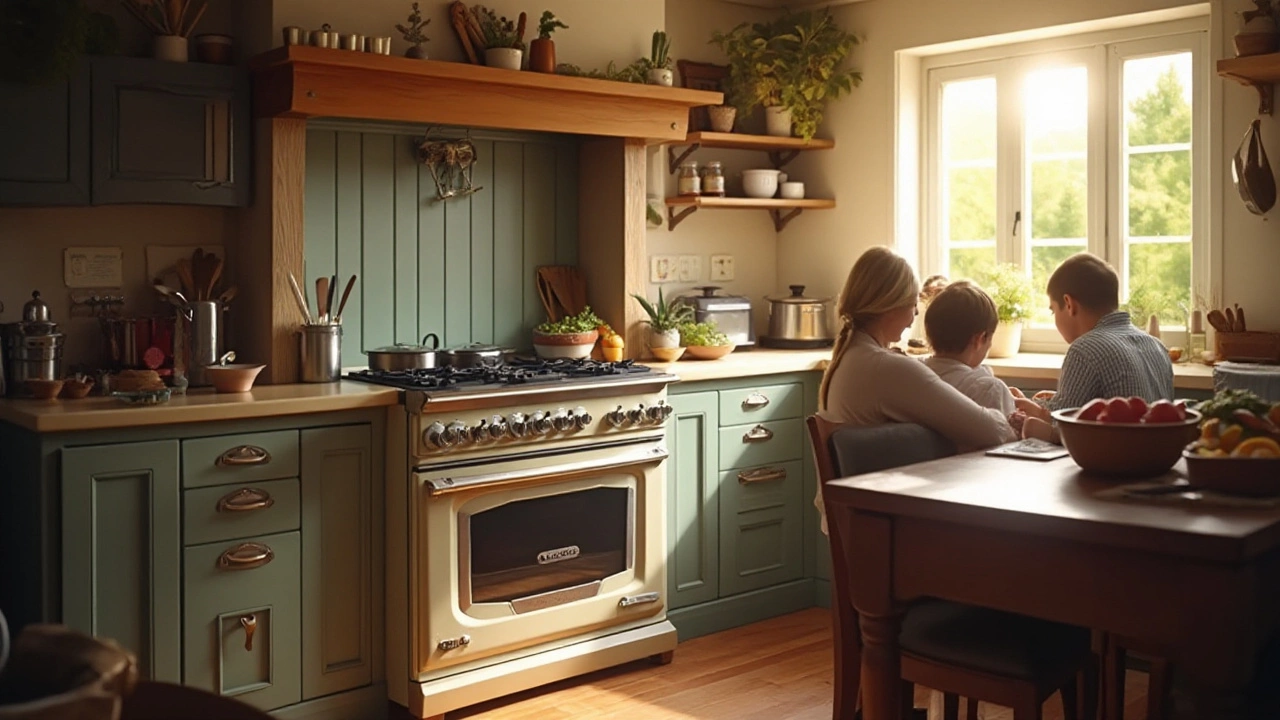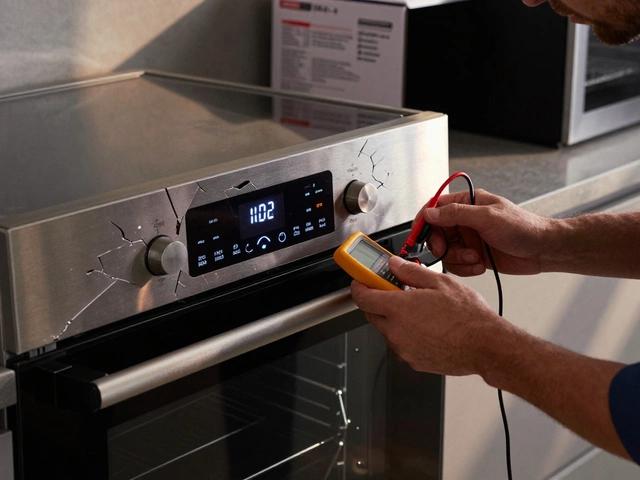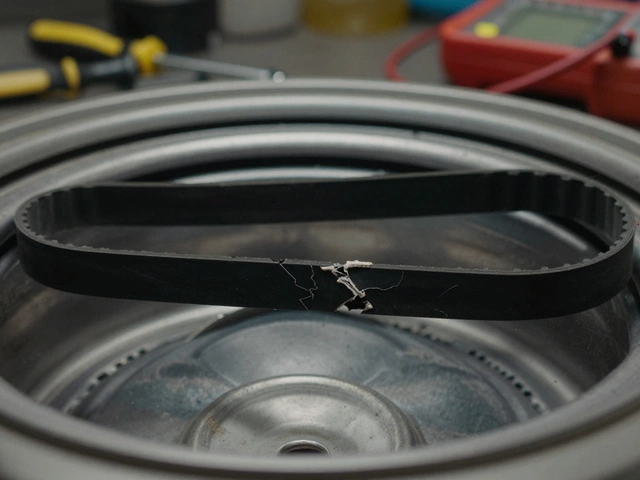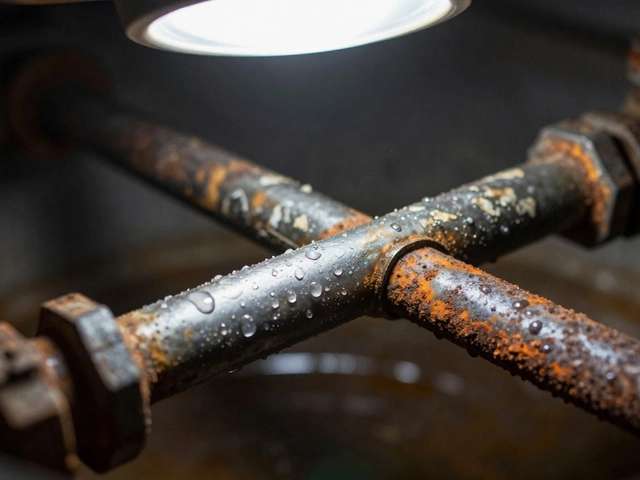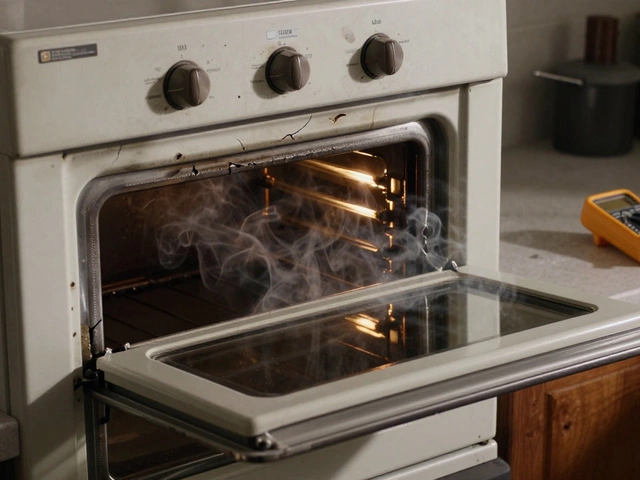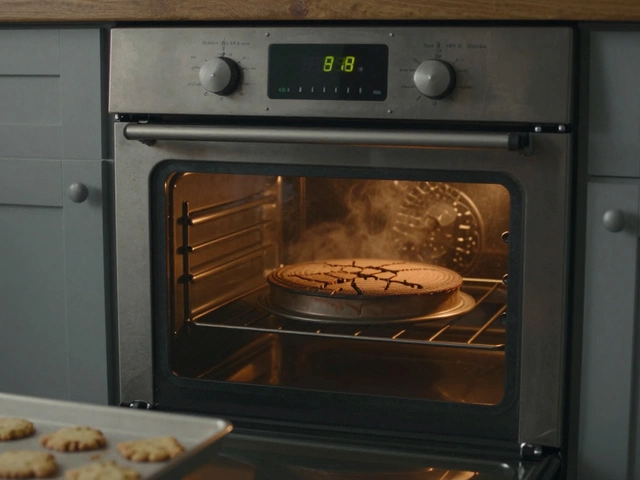Electric stoves occupy a prominent place in our kitchens, serving as the epicenter for crafting meals and testing culinary adventures. With their significant role, understanding their potential longevity can help homeowners make informed decisions.
Although these appliances are rugged and capable of serving a household for years, several factors can influence their lifespan. In this read, explore how various elements like brand, usage habits, and care affect how long an electric stove can last. Additionally, the article extends practical advice on maintaining and repairing these essential appliances to ensure that they continue operating smoothly over time.
- The Expected Lifespan of Electric Stoves
- Factors Influencing Durability
- Maintenance Tips for Longer Life
- Common Repair Issues
- When to Call a Professional
- Innovations in Electric Ovens
The Expected Lifespan of Electric Stoves
Electric stoves, or ranges as they're sometimes called, have become a staple in modern kitchens owing to their reliable performance and efficiency. Typically, these appliances are built to last, with an average lifespan hovering between 13 and 15 years. This range, however, is not set in stone and can vary considerably based on a number of factors. Brand reputation plays a crucial role; known manufacturers often put their products through rigorous testing to ensure durability. While an electric stove may outlive its expected lifespan, regular maintenance and responsible usage are key to reaching or exceeding this timeframe.
One interesting aspect of the electric stove's longevity is how usage patterns can affect it. A household that frequently cooks large meals may find their appliance showing wear more quickly than one used less often. Overloading stove tops or using the wrong types of cookware can put undue strain on the appliance, shortening its lifespan. Routine deep cleaning, especially of the burners and oven interior, can help mitigate these factors, ensuring that your stove continues to perform efficiently over the years. One expert has noted,
"Keeping an electric stove clean not only improves its efficiency but also extends its lifespan," says Jane Clark, a seasoned appliance repair technician.
Technological advancements have also contributed to the durability of modern electric stoves. Today’s models are built with robust materials that are resistant to corrosion and wear. The introduction of smart technology allows for more accurate temperature control, which minimizes the risk of damage from overheating. This integration of technology enhances user experience while also contributing to the product’s longevity. However, these intricate systems can introduce new challenges when repairs are needed, and it's essential for homeowners to understand when professional help is necessary.
Though the fundamental design of electric stoves hasn’t changed drastically over the decades, innovations and material improvements have ensured they remain fixtures in our homes for years longer than earlier models. Regular inspections and care can't be overstated—check the wiring and heating elements periodically to catch issues before they escalate into costly repairs or replacements. Investing time in understanding your appliance's needs will pay dividends, as an electric stove that’s properly maintained can serve your family far beyond its expected lifespan.
Below is an overview of what you can generally expect regarding an electric stove’s longevity based on usage and maintenance:
| Condition | Average Lifespan (Years) |
|---|---|
| Optimal Usage & Regular Maintenance | 15+ |
| Moderate Usage & Maintenance | 12-15 |
| Frequent Usage & Poor Maintenance | 10-12 |
Ensuring your electric stove lasts as long as possible requires more than just cautious use and periodic cleaning. Owners should consider warranties and service plans that can alleviate some wear and tear concerns. By combining these proactive approaches, you’ll not only maximize your stove's lifespan but also ensure continued safe, enjoyable cooking experiences.
Factors Influencing Durability
One of the most common questions about electric stoves is how long they can realistically last. The lifespan of these reliable kitchen workhorses is not set in stone and can vary greatly. A host of factors come into play, heavily influencing their durability and efficient performance. One of the primary considerations is the brand and quality of the stove. Higher-end brands often incorporate robust materials and bind them with advanced technology, extending the life expectancy of the appliance. Investing in a well-reviewed brand can sometimes offer peace of mind, such as reliability warranties that stand testament to the manufacturer's faith in the product. The variation in material quality leads to differences in resistance to wear and tear, which implies that some stoves stand the test of time better than others.
The way an electric stove is used daily also greatly affects its longevity. In households where the stove is a culinary superstar, facing the challenge of cooking elaborate meals regularly, wear and tear will naturally escalate. It’s crucial to follow the recommended usage guidelines, such as avoiding the common pitfall of placing oversized pans on burners, which can strain components. Properly adjusting the heat settings as per recipe requirements instead of always cooking on high can prevent unnecessary stress on the appliance. Consistent maintenance and cleaning routines hold undeniable value in elongating their lifespans. Regularly wiping down the stove surfaces can prevent a preliminary build-up of grime and food particles that could lead to functional inefficiencies over time.
According to appliance safety experts, voltage fluctuations and electrical issues are often overlooked but potent contributors to the deterioration of electric stoves. Ensuring that the stove is plugged into a stable power source, with possibly an added protection of a surge protector, is crucial. An electrical anomaly has the potential to instantly harm the sensitive internal elements that regulate heating and control.
"Regular inspection for signs of malfunction like unusual smells or sparks can prevent major damage," suggests Davis Monroe, a seasoned appliance technician from Reliable Repairs.
Environmental factors also leave their indelible mark on how long your electric stove will keep functioning effectively. Stoves located in excessively humid areas or environments prone to moisture might experience quicker internal rusting and corrosion. It is wise to address and control the ambient humidity levels in kitchen spaces to fend off seasonal dampness or moisture.
Finally, the decision of when to seek electric oven repair can significantly affect the durability. Procrastinating needed repairs can cascade into more extensive damage, resulting in costly replacements. This means that awareness and immediate action on the first sight of faulty operation are key. Engaging with professional repair services that understand the nuances of your model can help restore it promptly. By proactively managing these factors, homeowners can significantly enhance the longevity of their electric stoves, ensuring that they remain valuable allies in the kitchen for many years to come.
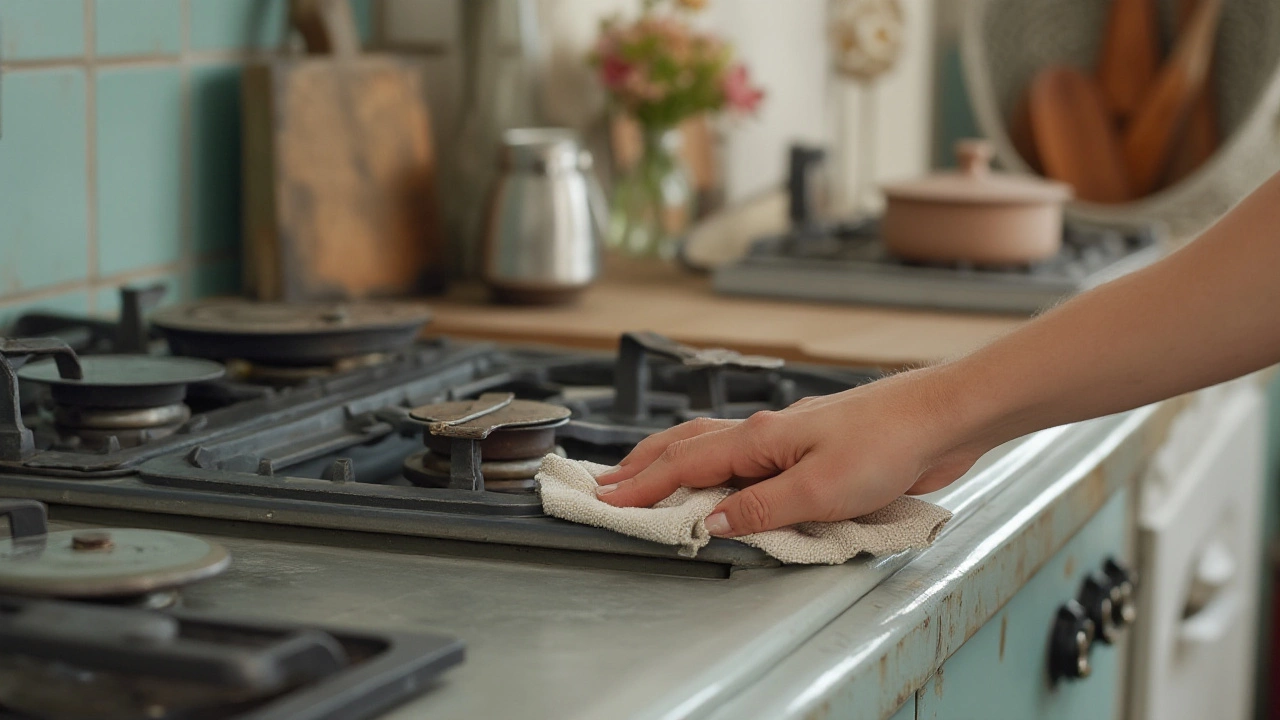
Maintenance Tips for Longer Life
Your electric stove lifespan can achieve its maximum potential with a bit of regular maintenance and care. Many times, we assume that appliances will just keep working without a hitch for years. However, neglect and misuse can lead to costly repairs and a shortened life span. One of the first steps in stove maintenance is keeping it clean. After every cooking session, make it a habit to wipe down the glass top or coils once they’ve cooled. Grease and food residue can bake onto surfaces, becoming tougher to remove over time. Use a gentle cloth and mild detergent to avoid scratches. Always check to ensure cleaning agents are suitable for your stove surface.
Something that often goes unnoticed is the condition of the stove’s burners. Burners, whether they are coil or glass-ceramic, should heat evenly. If you notice irregular heating, inspect them for any signs of wear or damage. Properly maintained burners not only cook more efficiently but last longer too. Similarly, knobs and dials should be checked regularly. Loose connections can lead to malfunction or loss of control over temperature settings.
Dr. Julie Smith, a well-regarded home appliance expert, emphasizes consistency in upkeep.
A stitch in time saves nine; regular cleaning and checks can prevent problems before they happen,” says Smith.This holds especially true with rubber seals around the oven door. A good seal ensures that heat remains trapped inside the oven for efficient cooking, reducing energy consumption and wear on the heating elements. Inspect this seal for any cracks or breaks and replace if necessary to keep your oven functioning optimally.
If your unit sports a self-cleaning feature, use it sparingly. While convenient, frequent use of this function can strain your stove’s electrical components. Instead, complement occasional self-cleaning cycles with traditional cleaning methods to balance convenience and care. Also, if your electric stove includes special features like a convection setting or programmable timers, make sure they’re working correctly and being used according to the manual. Not only will you extend your stove’s life, but you’ll also enjoy the benefits of these features, bringing more versatility to your cooking.
| Maintenance Task | Frequency |
|---|---|
| Wipe down surfaces | After each use |
| Inspect burners | Every month |
| Check door seal | Twice a year |
| Use self-cleaning | Sparingly |
These measures can ensure that your electric stove remains a reliable partner in your culinary endeavors, potentially extending its life to the expected 13 to 15 years or beyond. It’s this kind of routine attention that can keep you cooking without interruption and enjoying the heart of the home for many meals to come.
Common Repair Issues
When it comes to your trusty electric stove, a number of repair issues can crop up as your appliance ages. One of the most prevalent problems is uneven heating, where the stove might struggle to maintain a consistent temperature. This can make cooking a frustrating experience, especially when meals aren't turning out as expected. Typically, this issue is linked to a malfunctioning heating element or a problem with the temperature sensor. Regular cleaning and inspecting the elements for visible damage can aid in its longevity. Another common pain point for electric stove owners is a broken ignition switch, which can prevent the stove from turning on. When this occurs, it might simply mean the switch has worn out from frequent use and needs replacing.
Electric stoves can also start popping faulty electrical signals, usually because of loose or damaged wires. This not only impacts performance but can pose a safety risk too. Regular checks on the wiring can prevent more serious problems in the future. Keep an ear out for unusual sounds; buzzing or clicking sounds might indicate a deeper electrical issue. Less often thought of is the oven door not closing properly. It sounds trivial, but it can waste energy and disrupt the cooking process. Typically, a faulty hinge or seal will be the culprit. Addressing these problems early by consulting your appliance's manual and seeking professional advice when necessary can extend the appliance's lifespan significantly.
"Don't procrastinate. Little problems become big problems, and stove repairs can be costly," says appliance repair expert and author David Mikkelson. "Regular maintenance and quick attention to minor issues can save you money down the line."
Not to forget, digital displays and controls are becoming a more common feature of modern stoves, and while they bring convenience and precision, they can also act up. Software glitches or faulty control boards are frequent complaints, especially after a power surge. Resetting the stove by disconnecting it from the power supply can work wonders. In terms of electric oven repair, understanding these typical problems and how to spot them early can make a difference to your home cooking adventures. Let's remember, catching these issues early reduces costly replacements, and allows your stove to shine as the culinary workhorse it's meant to be. Regular maintenance won't just keep the stove running, it'll ensure your meals turn out just as you envisioned.

When to Call a Professional
Discovering when it’s time to reach out to a professional for your electric oven repair can save a lot of time and trouble. While many minor issues can be resolved with basic troubleshooting, certain signs suggest it’s best to consult the expertise of a seasoned repair technician. If your stove’s burners fail to heat or remain erratically inconsistent, it could point to a deeper electrical problem beyond a simple DIY fix. Electrical components are often complicated, and incorrect handling may lead to further damage or safety risks.
Persistent strange odors can also be a red flag. If the scent of burning electrical wires or gas permeates your home when using the stove, it’s wise to contact a professional immediately. Such smells often indicate worn-out wiring or faulty connections that require urgent attention. This is crucial, as continuing to use the appliance in this state can be hazardous. A professional can ensure all aspects of your stove are safe and working correctly.
Another clue lies in unusually high electricity usage which can hint at inefficient stove operation. Homeowners might notice their energy bills unexpectedly climbing, and while several factors could be responsible, a malfunctioning electric stove could be one culprit. Professionals use diagnostic tools to determine if the appliance is running optimally or whether repairs are necessary. Researchers from the Home Appliance Institute suggest that stoves not operating efficiently can add up a decent chunk to your monthly energy expenses.
High electricity consumption in kitchen appliances is often surreptitious and unnoticed by most families until a professional evaluation is performed. - Home Appliance Institute
Let’s not forget the vivid and useful function of a stove’s control panel. If you happen upon blinking display lights, inconsistent temperature readings, or controls that have become unresponsive, this can be an indication of underlying electrical circuitry issues. These types of malfunctions generally require technical professional intervention to evaluate and repair safely. Attempting to fix such issues without appropriate know-how might inadvertently damage the onboard electronic systems.
Older models, especially those nearing or past their expected lifespan of 13 to 15 years, may showcase signs of wear and require professional servicing or even replacement. At this stage, conducting a cost-benefit analysis is helpful: will repair costs outweigh the benefits of purchasing a newer, more efficient model? Professionals can provide pragmatic advice tailored to your stove’s condition and your household needs. Sometimes an upgrade could even save money in the long run because of enhancements in energy efficiency.
Lastly, if you find yourself scheduling repairs frequently, perhaps more than once or twice a year for the same recurring issues, it might suggest an underlying problem. In these situations, consulting a professional to assess whether repeated repairs are indicative of an overall electrical system issue or if they reflect the natural declining phase of your electric stove's lifespan can offer clarity. Remember, a well-maintained electric stove can be a quiet and reliable partner in your kitchen—even a small problem handled professionally will ensure it remains that way.
Innovations in Electric Ovens
Electric ovens have come a long way since their inception, now dazzling users with technological marvels that enhance cooking experiences. Among the remarkable advancements is the integration of smart technology, allowing homeowners to sync their ovens with smartphones and other devices. This innovation not only provides convenience but also opens doors to precision cooking techniques previously imagined only in futuristic settings. By using apps, users can now preheat ovens on their way home or monitor cooking progress from the comfort of their couches, embodying a new age of culinary connectivity that was once a dream.
The focus on eco-friendliness has spurred manufacturers to design models that minimize energy consumption. High-efficiency ovens equipped with advanced insulation and precision temperature controls bolster sustainable cooking practices. These innovations save money on electricity bills and reduce the carbon footprints of households, an increasingly important factor in the modern era where environmental awareness is on the rise. It’s not just about the savings; it's about contributing to a greater good, which everyone can appreciate.
Particularly impressive is the introduction of advanced convection technology, perfected to circulate hot air uniformly across oven compartments. This ensures even cooking, whether baking a tray of cookies or roasting a chicken. Enhanced convection features now include multiple fans or dual-speed motors that cater to specific cooking needs, delivering exceptional results. It's no surprise that this has become a preferred choice among professionals and home cooks devoted to achieving top-tier culinary outcomes.
Exploring further, steam-assisted cooking is a game changer, adding an exciting edge to electric ovens. This feature injects steam into the cooking chamber, maintaining moisture levels within foods. The result is roasts that are juicy on the inside and baked goods with perfect crust textures. This method is favored by those who prioritize retaining nutrients and flavor without excessive oils, aligning with healthier cooking aspirations.
"Modern electric ovens are revolutionizing the culinary scene with features that promise precision, efficiency, and enhanced flavors," notes culinary expert Samantha Grace. "They transform how we cook, making it more intuitive and less wasteful."
Added features continue to punctuate these innovations, with self-cleaning ovens leading the convenience bandwagon. This eliminates the labor-intensive job of scrubbing burnt residues, an often-dreaded task for many. Newer models now employ different cleaning modes, from high temperature to steam-based processes, that effortlessly deal with stubborn grease and grime. This means more time spent enjoying delicious meals than cleaning, a transition welcomed by all. In essence, electric ovens are now smarter, greener, and cater more closely to the unique needs of every kitchen, big or small, ensuring that they remain a staple in modern homes for many years.

